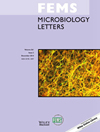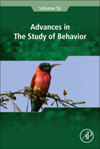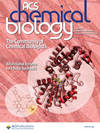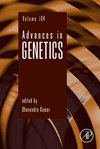期刊简介
FEMS Microbiology Letters gives priority to concise papers that merit rapid publication by virtue of their originality, general interest and contribution to new developments in microbiology. All aspects of microbiology, including virology, are covered. 2019 Impact Factor: 1.987, Journal Citation Reports (Source Clarivate, 2020)Ranking: 98/135 (Microbiology)The journal is divided into eight Sections:Physiology and Biochemistry (including genetics, molecular biology and ‘omic’ studies)Food Microbiology (from food production and biotechnology to spoilage and food borne pathogens)Biotechnology and Synthetic BiologyPathogens and Pathogenicity (including medical, veterinary, plant and insect pathogens – particularly those relating to food security – with the exception of viruses)Environmental Microbiology (including ecophysiology, ecogenomics and meta-omic studies)Virology (viruses infecting any organism, including Bacteria and Archaea)Taxonomy and Systematics (for publication of novel taxa, taxonomic reclassifications and reviews of a taxonomic nature)Professional Development (including education, training, CPD, research assessment frameworks, research and publication metrics, best-practice, careers and history of microbiology)If you are unsure which Section is most appropriate for your manuscript, for example in the case of transdisciplinary studies, we recommend that you contact the Editor-In-Chief by email prior to submission. Our scope includes any type of microorganism - all members of the Bacteria and the Archaea and microbial members of the Eukarya (yeasts, filamentous fungi, microbial algae, protozoa, oomycetes, myxomycetes, etc.) as well as all viruses.
FEMS微生物学通讯优先考虑那些由于其原创性、普遍兴趣和对微生物学新发展的贡献而值得迅速出版的简明论文。涵盖了微生物学的所有方面,包括病毒学。2019年影响因子:1.987,期刊引文报告(来源:Clarivate,2020)排名:98/135(微生物学)该杂志分为八个部分:生理学和生物化学(包括遗传学、分子生物学和'组学'研究)食品微生物学(从食品生产和生物技术到腐败和食源性病原体)生物技术和合成生物学病原体和致病性(包括医学、兽医、植物和昆虫病原体-特别是与食品安全相关的病原体-病毒除外)环境微生物学(包括生态生理学、生态基因组学和元组学研究)病毒学(感染任何生物体的病毒,包括细菌和古菌)分类学和系统学(用于发表新分类、分类学重新分类和分类学性质的评论)专业发展(包括教育、培训、CPD、研究评估框架、研究和出版指标、最佳实践、职业和微生物学历史)如果您不确定哪个部分最适合您的稿件,例如跨学科研究,我们的范围包括任何类型的微生物-细菌和古菌的所有成员以及真核生物的微生物成员(酵母、丝状真菌、微藻、原生动物、卵菌、粘菌等)。以及所有病毒。
《FEMS MICROBIOLOGY LETTERS》期刊已被查看: 次









